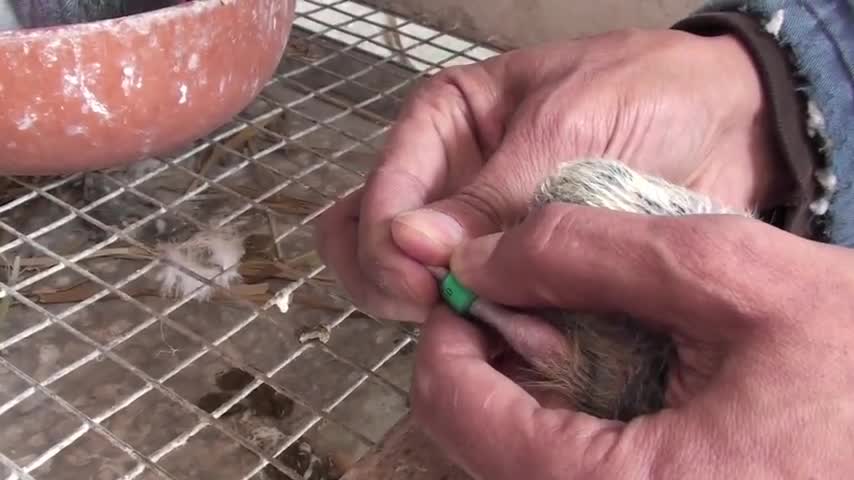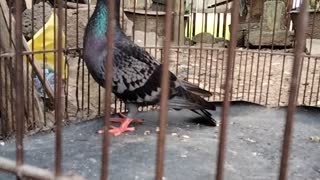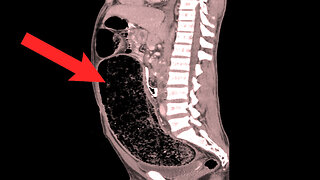Premium Only Content

Banding Baby Pigeons
Pigeon fanciers developed many exotic forms of pigeon. These are generally classed as fancy pigeons. Fanciers compete against each other at exhibitions or shows and the different forms or breeds are judged to a standard to decide who has the best bird. Among those breeds are the English carrier pigeons, a variety of pigeon with wattles and a unique, almost vertical, stance (pictures). There are many ornamental breeds of pigeons, including the "Duchess" breed, which has as a prominent characteristic feet that are completely covered by a sort of fan of feathers. The fantail pigeons are also very ornamental with their fan-shaped tail feathers.
Pigeon breeders sometimes suffer from an ailment known as bird fancier's lung or pigeon lung. A form of hypersensitivity pneumonitis, pigeon lung is caused by the inhalation of the avian proteins found in feathers and dung.Many domestic birds have escaped or been released over the years, and have given rise to the feral pigeon. These show a variety of plumages, although some look very much like pure rock pigeons. The scarcity of the pure wild species is partly due to interbreeding with feral birds. Domestic pigeons can often be distinguished from feral pigeons because they usually have a metal or plastic band around one (sometimes both) legs which shows, by a number on it, that they are registered to an owner.
Trained domestic pigeons are able to return to the home loft if released at a location that they have never visited before and that may be up to 1000 km away. A special breed, called homing pigeons has been developed through selective breeding to carry messages and members of this variety of pigeon are still being used in the sport of pigeon racing and the white release dove ceremony at weddings and funerals.
The ability a pigeon has to return home from a strange location necessitates two sorts of information. The first, called "map sense" is their geographic location. The second, "compass sense" is the bearing they need to fly from their new location in order to reach their home. Both of these senses, however, respond to a number of different cues in different situations.
However, studies have shown that if magnetic disruption or clock changes disrupt these senses, the pigeon can still manage to get home. The variability in the effects of manipulations to these sense of the pigeons indicates that there is more than one cue on which navigation is based and that map sense appears to rely on a comparison of available cues
-
 0:10
0:10
Nurcell
3 years agoPigeons birds
33 -
 8:56
8:56
TheStrangeGypsy
3 years agoClay Pigeons
292 -
 1:35:15
1:35:15
The Sage Steele Show
9 days agoDanica Patrick | The Sage Steele Show
1.85K2 -
 14:14
14:14
Degenerate Jay
2 days ago $0.66 earnedDid Spider-Man Fans Ruin The Character?
2.45K3 -
 29:22
29:22
Coin Stories with Natalie Brunell
2 days agoSaifedean: Bitcoin Poised for Cycle Top? Corporate Treasuries, Wealth Concentration & Gold Standard
4.36K4 -
 10:34
10:34
Chubbyemu
10 days agoA Lawyer Couldn't Sleep For 9 Days. This Is What Happened To Her Colon.
5.13K10 -
 20:55
20:55
Boho Beautiful Yoga
9 days ago20 Min Yoga For Full Body Detox & Complete Energetic Reset | Come Back Home ❤
8.14K3 -
 45:36
45:36
FULL SEND PODCAST
12 hours agoBill Maher on His Dating Life, Crazy Party Stories, and Trump Meeting!
6.09K3 -
 2:01:05
2:01:05
Inverted World Live
6 hours agoElon and the Technocracy Strike Back | Ep. 54
20K17 -
 7:06
7:06
Colion Noir
6 hours agoMass Shootings or Gang Violence? The Lie That’s Fueling Gun Control
43K15